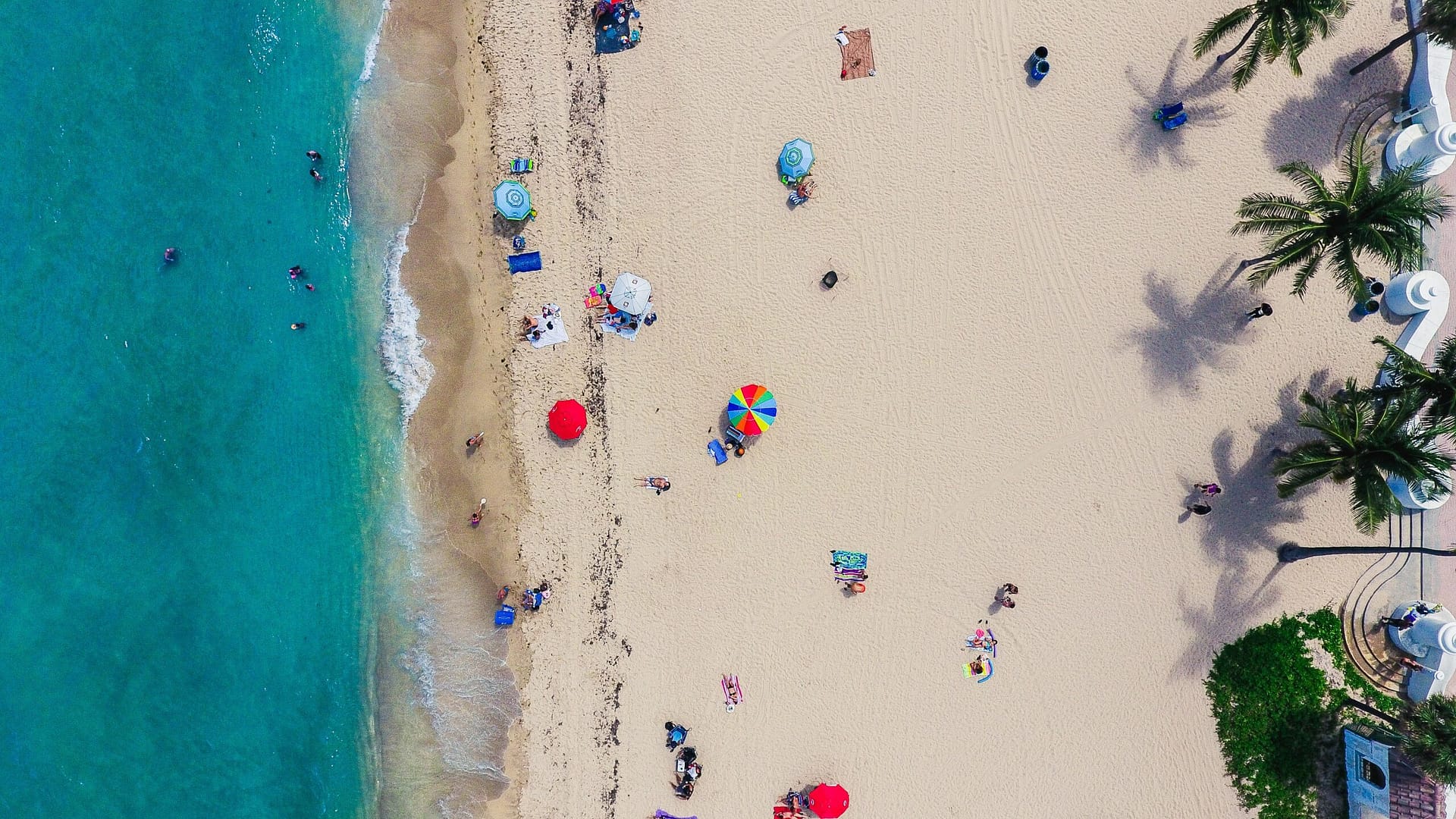Updated March 2025
Non-Toxic Sunscreen Guide

This post contains affiliate links. This means that I my receive a small commission if you make a purchase through one of these links at no additional cost to you.
Thankfully, these days I think we all know how important it is to protect our skin when we’re out in the sun. Like many parts of my wellness journey, I became all the more focused on finding nontoxic skincare products in the years leading up to conception (the Primemester) and during my pregnancies. Now as a mom, of course the same mindfulness applies to anything I use on my children.
With sunscreen, the standard has to be high. We need products that provide great protection and they need to be safe. As I explain below, we now know that common sunscreen ingredients are possible hormone disruptors, not adequately tested, and known to enter the bloodstream and remain in the body at elevated (untested) levels for weeks after use.
Why It’s Important to Use a Non-Toxic Sunscreen
The active ingredients in most chemical sunscreens are absorbed into the bloodstream. Based on recent studies, the FDA states: “when sunscreen is applied to the skin, even a single application, all six tested active ingredients and all of the formulations [lotion, aerosol spray, non-aerosol spray and pump spray], result in measurable blood levels of the active ingredient.” (More below on chemical vs. physical barriers).
These ingredients remain in the body for weeks. During the study, they were detectable in the blood for at least 21 days after participants discontinued use. Oxybenzone and homosalate were still in the body at unsafe levels at that time.
Concentrations of common ingredients exceed the FDA safety limits, prompting additional safety testing (source). Researchers noted that “multiple active ingredients lack nonclinical safety assessment data, including systemic carcinogenicity, developmental, and reproductive studies to determine the clinical significance of systemic exposure of sunscreen active ingredients.”
Many sunscreens don’t provide sufficient UVA protection because SPF indicates the amount of UVB protection only. This is why we need products with Broad Spectrum coverage.
Benzene, a known carcinogen, has been found in several popular aerosol sunscreen sprays, including Aveeno, Coppertone and Neutrogena, causing a slew of recalls in recent years (read more here).
- In addition to blood, it’s been found in human breast milk (source), amniotic fluid and urine.
- Possible endocrine disruptor that may increase the risk of breast cancer and endometriosis, among other hormone related issues.
- Banned in various states and countries due to damaging effects on coral reefs and sea life (source).
Physical vs. Chemical Sunscreens
-
Chemical sunscreens have active ingredients like Oxybenzone, Octylcrylen, Avobenzone and Octinoxate. These are absorbed into the skin and scatter the light as it enters the skin to prevent burning or damage (if it includes UVA protection).
-
Physical sunscreens usually have zinc oxide or titanium dioxide as the active ingredient. They sit on top of the skin and deflect the UV rays.
What are the Safest Sunscreen Options?
-
Sunscreen products made with zinc oxide or titanium dioxide are considered the most effective and safe. These also don’t burn my eyes, making them much more comfortable and child-friendly in my opinion. Note that titanium dioxide tends to be less effective against UVA rays, so I prefer products made with zinc oxide. Of the chemical sunscreens, Avobenzone seems to be the safest option. EWG classifies it as “green” scores of 1-2 based on current data. This is less likely to leave a white cast on the skin, which is an issue with some zinc or titanium dioxide based products.
-
Look for products with Broad Spectrum coverage. SPF only indicates the amount of UVB protection, however, we also want to protect against UVA, which causes premature aging and is also associated with skin cancer risk (like UVB).
-
Opt for sunscreen sticks and lotions. Spray bottles pose an inhalation risk and you’re likely to use too little (and I’ll just admit that I find them annoying when used in public settings since I almost always end up inhaling them when someone uses them near me!). There is also the benzene contamination risk I mentioned above.
-
Avoid sunscreens that are mixed with bug repellent, which is known to interfere with the sun protection.
-
Consider opting for non-nano zinc and non-nano titanium dioxide. Nanoparticles are extremely small and there’s some concern that at this size, they can penetrate the skin and enter the bloodstream. Most research shows that very little crosses into the bloodstream and does not indicate reason for great concern. If you want to err on the side of safety, stick to non-nano until this has been studied further. Non-nano is also less harmful to sea life.
-
Check Think Dirty or EWG’s Healthy Living database to find how a product scores in terms of overall toxicity and efficacy. Even a sunscreen that hits the above criteria can still be made with things like phthalates, unhealthy preservatives and other possible endocrine disruptors.
Other Sun Protection Tips
-
Avoid long periods in midday sun when possible (11am-2pm).
-
Use an app like D Minder to keep an eye on the UV Index and get estimates on the amount of Vitamin D you’ve generated based on your location and skin type.
-
Make sure you’re using enough sunscreen and reapplying every 2 hours. The American Academy of Dermatology recommends about 1 fluid ounce (a shot glass) to cover your full body.
-
Remember that sunscreen doesn’t last forever! It can go bad and have reduced efficacy, so check the expiration date and don’t use past then, 3 years since opening, or if the color or consistency has changed.
-
I’m a big fan of hanging out in the shade, always wearing a hat, and using UPF clothing. I don’t think my kids have ever been to the pool or beach without full sleeves, and I wear them sometimes too! Not only is it great protection, but it just makes life easier.
Recommended Non-Toxic Sunscreens
Facial Sunscreens / Tinted Moisturizers
- I use the Juice Beauty Stem Cellular CC Cream SPF 30 every day as my tinted moisturizer and sun protection. It’s SPF 30, zinc-based, non-nano, and has a “green” EWG rating of 2 (on a scale of 1-10 with 10 being the most toxic).
- Previously, I used Andalou Naturals BB Cream, which is very similar to the Juice Beauty option above. I used this Age Defying version in the Natural Tint and usually a few dabs of the 1000 Roses option in Sheer Tan for the best color match.
- I also like the Suntegrity Tinted 5 in 1 Mineral Sunscreen for Face (broad spectrum, non-nano and SPF 30), which comes in 4 different shades. EWG rated 1.
- I keep the Attitude Tinted Mineral Sunscreen Face Stick, SPF 30 in my fanny pack to use on-the-go (in addition to the Think Sun Stick, which does leave a bit of a white cast, but my kids don’t mind, and I’ll use that on my hands, chest or shoulders if needed!).
All-Purpose Sunscreens – face, body, adults & children
-
I primarily use ThinkSport and ThinkBaby sunscreens and sun-sticks on my children. I also use it on my body and on my face (on top of my tinted moisturizer) if I’m spending extended time in the sun playing tennis, swimming, biking, etc..
- I’ve also been really liking Babo Botanicals Sheer Zinc Mineral Sunscreen, SPF 30. It rubs in a little more easily than some of the Think SPF 50 products. However, it’s only SPF 30.
Non-Toxic Sunscreens For Darker Skin Tones
-
I’ve heard great things about Ilia Super Serum Skin Tint, which is SPF 40. It’s also made of non-nano zinc and comes in a much wider range of tints. Think Dirty gives this a “green” rating of 3, but EWG rates them between 3-8 (depending on tint) because of concerns about it’s efficacy even though all of the ingredients are scored as 1-2. If you think of it as a lower SPF (20 or 30), it’s probably a great option.
-
Black Girl Sunscreen is a chemical-based (avobenzone), SPF 30 option that doesn’t leave a white cast like many of the mineral sunscreens on the market. People love it and it’s got a “green” EWG rating of 2.
-
Supergoop Unseen Sunscreen Lotion is another avobenzone option that also works well for darker skin because it rubs in clear and doesn’t leave a white cast. It’s SPF 40 and has a “green” EWG rating of 2.
EWG Non-Toxic Sunscreen Picks
-
If you’d like more safe sunscreen recommendations, check out the EWG Verified sunscreen options here on Amazon. You can also check the ratings of products you already use through their Skin Deep Database.







